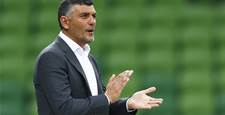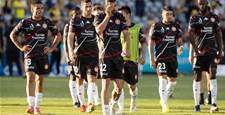Australian football came of age 10 years ago on a sweat-drenched night in Hanoi. It was the Socceroos first match as an 'Asian' nation – the exotic region was beckoning us into a new era – and we followed under the pretence that football down under could grow to bountiful new heights.
But we underestimated our opponents, and in 2007 Asia blooded us in with a brutal initiation. It was the type reserved for those seeking to become king.
A languid struggle against Oman – requiring a 92nd minute Tim Cahill equaliser – should have had alarm bells ringing, as the Socceroos made their Asian debut in almost calamitous circumstances.
We then fell apart in a 3-1 demolition against Iraq; the less said about that performance the better. The Socceroos somehow progressed, before a defensive error and a sending off saw us defeated by Japan in the quarter-finals.
As it is for so many overconfident youngsters, our first time was one to forget. But this Asian Cup was a tournament of precursors, letting us know what we could expect from the Socceroos subsequent decade in the Asian confederation.
Of course, now we’re undisputed Asian powerhouses – even if it’s still disputable that we’re Asian – but 10 years on, we’re still performing the same tricks.
Australia entered the 2007 Asian Cup with a sense of confidence that couldn’t match our organisation or ability. Ten years on, Tim Cahill still spares Australia’s blushes. Our largely European-based squad is still left lacklustre by balmy 35-degree nights in Bangkok.
We still struggle to score against defensive gulf nations, and we still get picked apart by the technical skill of Middle Eastern opponents. Most of all, we still show resolve against our fellow Asian heavyweights – Japan and South Korea.
After the 2006 World Cup, the Australian public warmly embraced the world-beating Socceroos, egging them on to bigger and better things. The 2007 Asian Cup put us back in our place.
But what happened to Graham Arnold’s battlers, the side that still looked hungover from 2006’s yearlong party? Here’s a look back at the team that promised so much, yet delivered so little, as we celebrate a decade of Aussie hits and misses in Asia.
Mark Schwarzer
The most intriguing aspect of looking back at our Asian Cup squad is how few caps our Socceroos had earned, despite how old they were. Mark Schwarzer was 34-years-old in 2007, but only had 46 caps.
This means that Schwarzer earned 63 caps between the ages of 34 and 40, which must be some sort of record. But back to the football.
After Schwarzy lost the first penalty shootout of his entire career against Japan, signalling Australia’s exit at the quarterfinal stage, he would play on for an awe-inspiring nine more years, eventually retiring at the ripe old age of 43.
In addition to setting records for the most Premier League appearances for a foreigner, and the only player to win back-to-back league titles with different clubs, Schwarzer published his own range of children’s books, and currently serves as a pundit for Optus Sport.

Lucas Neill
Does anyone actually know what’s happened to Lucas Neill? His career post-Asian Cup in many ways mirrors his performances during the tournament. He got a red card that lost us the match against Iraq and missed a penalty that lost us the quarter final against Japan, yet was still solid enough that he made the AFC Team of the Tournament. You just don’t get that with other captains.
Neill would go on to make another 59 appearances for the Socceroos following the Asian Cup, most of them as skipper. But things deteriorated quickly for Neill in the final two years of his career. Publicly berated for his lack of pace, Neill blamed younger Socceroos for their lack of commitment to the cause, before turning on the fans themselves.
There was no coming back from there. Neill never really retired, instead he slowly faded from relevance in a devastatingly sad end to a phenomenal career. He voided ties with Australian football and allegedly went bankrupt due to a series of high-risk investments.
Little has been written about Neill in the last year. But it’s worth remembering the defensive pillar the Socceroos were once lucky enough to possess, one that we perhaps should have realised was more fragile than we thought.
Patrick Kisnorbo
Kisnorbo was one of the European-dwelling fringe Socceroos that everyone knew, but few knew much about, until he returned to the A-league. The 2007 Asian Cup was one of the rare tournaments that Paddy featured in for the Socceroos, starting against Oman and Iraq, where a poor performance saw Arnold replace him.
Although he only gained 18 caps, at the time Kisnorbo was one of the Socceroos’ best defenders, as well as a Leicester City stalwart and fan favourite. Shortly following the Asian Cup, Kisnorbo moved to Leeds United, where he won the Player of the Season and Player’s Player before injuries derailed his career.
Kisnorbo eventually returned to Melbourne in 2013, where he’d started his professional career 13 years before, joining Melbourne City to become a key player in the re-branded clubs successful new era.
Following his retirement last year, Kisnorbo joined Melbourne City’s youth side as an assistant coach, before moving onto the assistant role at their W-League side. A future A-League coach in the making, Kisnorbo’s influence on Australian football is far from over.
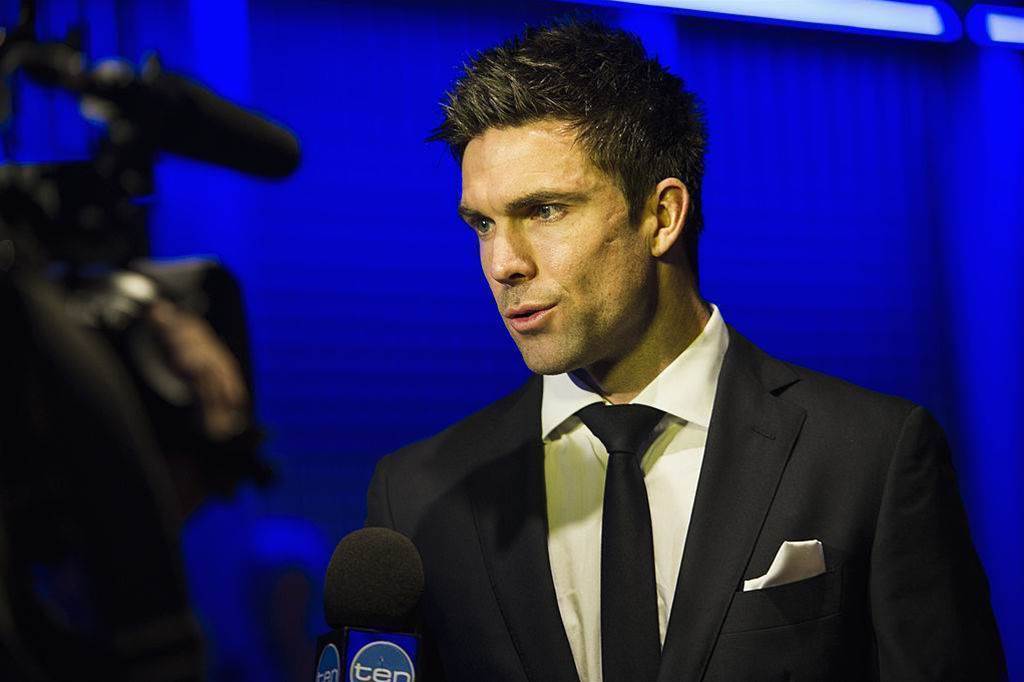
Michael Beauchamp
While we’re on the subject of fringe Socceroos, who could forget Beauchamp? It’s hard to believe his only 36, given even back in 2007 he looked in his 30’s, but Beauchamp was another hardy Australian centre-half who never quite cemented a place within the Socceroos lineup.
The best part about fringe ex-Socceroos isn’t what they did after their careers, but before they were fully professional. For instance, while Beauchamp was playing for Marconi Stallions, he made a living laying vinyl flooring. Great practice for his future career steamrolling forwards in the A-League.
A veteran of a very respectable 22 caps, Beauchamp had a decent, if not exceptional European career, playing for FC Nurnberg in the Bundesliga – alongside Dan Heffernan of all people – and FC Aalborg in Denmark.
Upon his return to the A-League, Beauchamp’s spell as Western Sydney Wanderer’s captain finished painfully short of the ultimate triumph, with Beauchamp released by the club a few months before its 2014 Asian Champions League victory.
Not to be discouraged however, Beauchamp’s career now has the perfect symmetry. The 36-year-old currently represents Marconi Stallions, the club he started his career with 17 years ago.
Jason Culina
Culina was a star of Australia’s disappointing Asian introduction, playing every minute of the Socceroos four matches. What should have followed was a prolonged European career, but instead Culina showed a trait very few Australian footballers have ever shown, rejecting a contract extension at Dutch powerhouses PSV Eindhoven to return to Australia as Gold Coast United’s marquee signing
Unfortunately not even Culina’s selflessness could keep Clive Palmer’s lovechild afloat, and blighted by injury and fallouts with coaches, Culina eventually retired.
The son of Branko Culina always seemed destined to go into coaching, but what’s more surprising is that Jason chose to start at the bottom. A year after his retirement, Culina began coaching at a private boy’s school in Sydney, before moving onto a technical director role at St. Josephs College.
Finally, he recently re-joined his father to coach Fraser Park FC in the National Premier League NSW where he’ll come up against Michael Beauchamp this season, as he completes his coaching badges.

Vince Grella
A brilliant defensive midfielder, Grella was the unsung hero of Australia’s 2006 World Cup campaign, and the only Australian to make the preliminary FIFA team of the tournament.
Despite obvious talent, during his international career Grella was often the victim of the overshadowing forces around him, otherwise known as the likes of Harry Kewell, Mark Bresciano and Brett Emerton.
But even though Grella’s Italian career largely echoed that of Bresciano, with similar success in stints for Empoli, Ternana, Torino and Parma – captaining the latter – Grella’s tactical acuteness deserves special recognition within this XI.
Unfortunately for Vince, his international legacy – and 46 caps – may have been far greater had he not suffered from the endless injuries that eventually forced his retirement, at the age of 32.
Nowadays, Grella lives in Italy, is a player agent associated with Frank Trimboli, yet still finds time to represent ‘Team11’, a potential A-league expansion based in Grella’s former home, Dandenong.
Brett Emerton
An unparalleled physical specimen, Emo is more than just another player on this list that formed part of Australia’s golden generation. Liverpool great Ian Rush spotted his talent as a boy at Sydney Olympic, saying later of the Australian, ‘he just had something’.
Most underestimated in Emerton’s impressive arsenal, and there was a lot, was his ability over a dead ball and venemous long-range strike, a trait he showcased during his time at Feyenoord, before touring it for Australians while he was at Sydney FC.
Due to his prodigious skill, work-rate and subsequent longevity, Emerton enhanced the reputation of Australians in England, as able to offer vastly more than just robust aggression.
The fourth highest-capped Socceroo of all time, Emerton’s 95 caps could have been far greater had an injury not prematurely ended his international career.
Following retirement, Emerton was a natural choice for an FFA ambassador role. Like many Socceroos he has an extensive portfolio of investment properties, and has publicly stated he wishes to start his own football website.

Mark Viduka
The 2007 Asian Cup was the last time ‘Dukes’ ever appeared in a Socceroos jersey. He may have left international football suddenly, and without explanation, but with three goals at least he left the Asian Cup in style.
He was more mysterious than Neill, but without all the controversial intrigue stemming from quarrelling with fans and youth players. Nevertheless, in the latter stages of his career Viduka did polarise.
Many accused him of never showing full commitment to the national team. While it’s easy to criticise given the exceptional efforts of many other Australians on this list, Viduka was an enigma, in every way.
40 goals in just 48 appearances for the Melbourne Knights – where the Knights Stadium’s only grandstand now bears his name. 40 goals in 84 appearances for Dinamo Zagreb, a mammoth 30 in 37 for Scottish giants Celtic, and 59 in 130 for English dynamo Leeds United.
Many, including Viduka himself, have spoken out about his upbringing, and how it influenced the way he deals with publicity today. He retired aged 31, lives in Melbourne with his wife and children, and still feverously supports Melbourne Knights.
Mark Bresciano
2006 / 2007 wasn’t as successful for Bresc as it was for many others. While he dominated in Serie A, playing some of the best football of his career, Bresciano failed to have the same impact at international level during this period.
At club level, Bresc re-invented what success looked like for Australians in Italy’s top flight, with 330 appearances for Empoli, Parma, Palermo and Lazio after leaving the CoE in 1997.
He also had six very successful years in the Middle East, especially compared to many of the Australians who ventured over then, and now.
His unique standing among the Socceroos golden generation saw him become one of only two regular starters in the 2006 World Cup to be retained for the 2014 tournament, with Bresciano eventually retiring a year later.
He retired in Qatar, citing that it was unexpected and he would of liked to return to the A-League. But he also acknowledged that Schwarzer had a point when he said Socceroos greats suffered when returning to Australia past their prime.
Following retirement, Bresciano is practically the only former footballer on this list that’s not involved in football. He lives in Melbourne, completed a Technical Director course in Italy, but has passions other than football to keep him active these days.
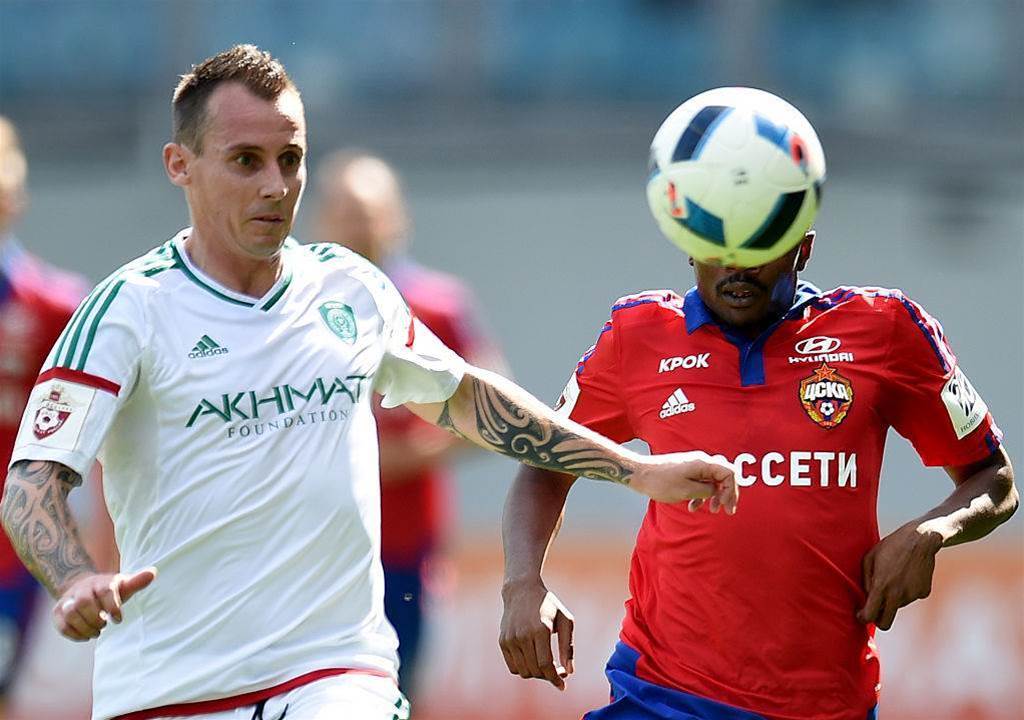
Luke Wilkshire
Guus Hiddink praised Wilkshire as one of the most technically gifted Australian players during his reign – and there were a few to choose from. Unfortunately for Wilkshire, his place at the heart of the golden generation is often overlooked, and he now occupies a position as one of the Socceroos forgotten men.
Many pundits considered him an unfair victim of Postecoglou’s Socceroos regeneration, but he’ll always be remembered as one of the finest fullbacks Australia’s ever produced.
Until May, Wilkshire was playing for Dynamo Moscow, where he was one of Australia’s highest-paid and most prestigious footballers. Although an A-league contract would be a certainty for the 35-year-old, and an opportunity to show Aussie fans what they’ve been missing, Wilkshire’s retirement now looks likely.
He’s well-established in Russia, has spoken at length about his love for his Russian wife and children, and recently converted to Russian Orthodox Christianity.
Proschay Luke.
Harry Kewell
Australia’s greatest footballer never hit the heights in 2007’s tournament, despite the promise he offered to already over-confident Australian fans. Yet Kewell’s loyalty to the Socceroos was never in question, and he performed far more admirably in the 2011 tournament.
Although he remained with Liverpool for a few more injury-ravaged seasons, Kewell finally left for Galatasaray in 2011, where the winger gained a new lease on life. His impact in a short spell in Turkey (before returning to disappointing effect in the A-League) has never been forgotten by the amazing Turkish fans.
Unlike Culina, who has seemed quite content to start on managements lowest rung, Kewell has shown loftier ambitions, already stating several times that he wishes to coach Liverpool.
Almost immediately following retirement, Kewell completed his UEFA B and A licences, and took over as u/21 coach at Watford. He lasted barely a few months, before getting sacked for poor results.
Not to be deterred, Kewell took the manager role at League Two club Crawley Town, becoming the first Australian to coach a professional English side. He’ll have his work cut out for him with the (other) Red Devils, who finished 19th last season.
But as one of the few foreign-based Australian coaches, it does make him – by de facto – one to watch for the future.
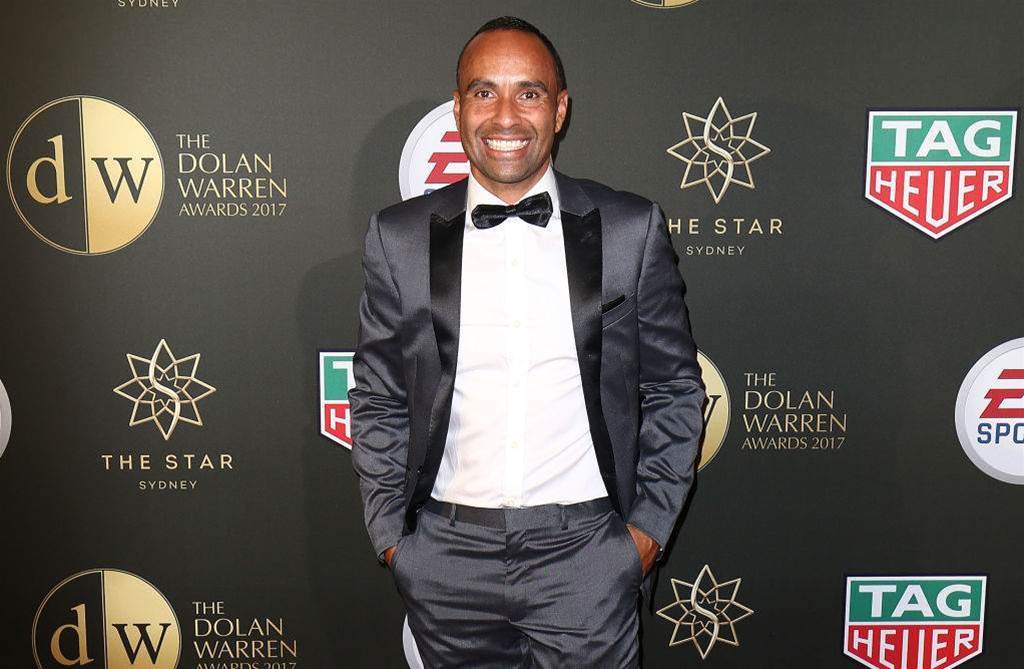
Archie Thompson
While Thompson was already on the outer in 2007, having missed the 2006 World Cup squad and barely featured in a friendly since 2004, he did make one substitute appearance against Iraq, to little avail.
Many thought it was the end, but Thompson’s physical longevity and fighting spirit saw him experience a rebirth after 2007, and continue to feature for the Socceroos until 2013.
In 2012, Archie won 12 Socceroos caps and scored an impressive 7 goals. But thing’s began to drop off quite quickly for the Melbourne Victory icon in 2013.
Although he continued to be an illustrious battler, age and a knee-reconstruction permitting, Thompson wasn’t the lightning-quick goal scoring machine he once was. After 224 appearances and an A-league record 90 goals for Victory, Thompson left and joined former NSL heavyweights Heidelberg United.
Unfortunately, the marquee man couldn’t score for the Warriors, putting in average displays before dropping down another division to play with Murray United in the Victorian NPL 2. The goals may have dried up, but his fiery determination never will.
Nick Carle
In 2006 Carle was one of the most exciting prospects in Australian football. His flair, speed and brilliant finishing ability – the product of his Uruguayan and Chilean heritage, and an upbringing playing futsal – saw him shine vociferously during his time in the A-League.
He will forever be remembered by the fans of Newcastle Jets as a flashback to an old era, when the Jets were one of the most stylish, exciting clubs in the league. This is summed up best by Carle’s 2006 Goal of the Season against Adelaide United, one of the finest strikes to ever grace the A-league.
After winning the A-league’s highest honour in 2007, the Johnny Warren medallist moved overseas to Genclerbirligi SK, commanding one of the highest A-League transfer fees of all time.
Following his short spell in Ankara, he broke the £1 million mark in transfers to Bristol City then Crystal Palace. Yet Carle’s style wasn’t favoured by Neil Warnock, and in a cruel twist of fate, one of Australia’s most delicate, fanciful footballers was partnered with one of England’s hardest, no-nonsense coaches.
Ultimately, Carle would return home to little success. Following a prolonged yet unsuccessful battle to avoid retirement, he now performs scouting duties for Sydney FC, in addition to managing clinics for the Caravella Football Academy.

Mile Sterjovski
Sterjovski wasn’t a fringe Socceroo. He won 43 caps, scored eight goals and played three games at the 2006 World Cup, becoming one of Guus Hiddink’s favourites. He also had a very successful, extended career in the A-league, especially compared to some of his fellow golden generation counterparts.
But he was rarely given the same aura of his fully-fledged Socceroos counterparts, the likes of Culina, Grella and Thompson. Following a successful year at FC Basel, the 2007 Asian Cup was evidence of that. After starting Sterjovski against Oman, Arnold substituted him at half time. He didn’t feature again the entire tournament.
He wasn’t the most naturally skilled winger, but his precocious work rate was unparalleled within the side, he could score goals and he had the versatility to play anywhere in midfield
After finishing his career with successful spells at Perth Glory and Central Coast Mariners, at least Sterjovski attained some recognition in the form of his clinic, the Mile Sterjovski Football Clinic, that he manages in Sydney.
And hey, it’s not like Graham Arnold’s doing much these days, is it?
Related Articles
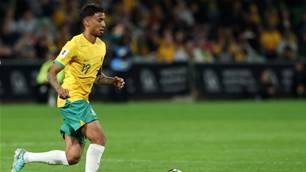
Socceroos midfielder embraces move to England
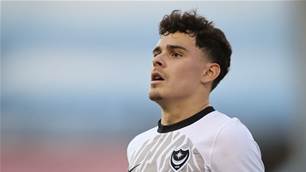
Cardiff City snap up sought-after Socceroos starlet
.jpeg&h=172&w=306&c=1&s=1)




